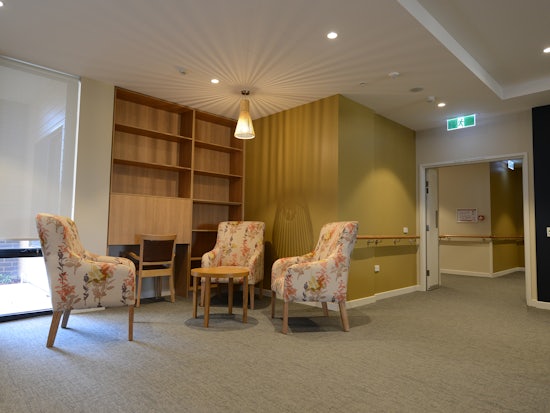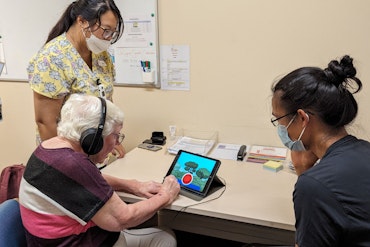Report shines light on struggling aged care industry
Concern continues to mount over the financial future of the nation’s aged care sector, following the public release of a startling new report this week.

New StewartBrown report says 45.1 percent of the 974 facilities surveyed recording an operating loss (Source: Shutterstock)
The new report, by accounting and benchmarking firm StewartBrown, suggests that the financial performance of the aged care sector is experiencing “significant challenges” due to a continued decline in profitability – with 45.1 percent of the 974 facilities surveyed recording an operating loss.
StewartBrown highlights in their report that these losses in both the residential care and home care segments “creates challenges” for the long-term financial sustainability of the sector.
“The financial performance of the aged care sector, and specifically the residential care and home care package segments, has experienced a significant deterioration in the operating results for Financial Year 2018 (FY18).
“A continuation of this decline or even just maintaining the results will potentially place a number of residential care facilities in a financially vulnerable position which could impact on the organisation’s sustainability.”
The report further highlights that the current funding model is “under significant strain”, noting that the residential aged care performance decline was revenue related, largely due to the changes and issues with the Aged Care Funding Instrument (ACFI).
“The impact of the regulatory changes and funding pressures has resulted in the disturbing statistic that 45.1 percent of residential facilities reported an EBT operating deficit for FY18,” StewartBrown states in their report,” they say.
“Even more disconcerting is that 21.2 percent of facilities had a negative EBITDA (Earnings before interest, tax, depreciation and amortization) – indicating a cash loss from operations.”
Though all areas of aged care are impacted, StewartBrown say the financial viability of outer regional, rural and remote aged care providers is “reaching a pivotal point”.
“All geographic locations reported a decline, however, the outer regional, rural and remote locations have significant financial concerns,” the firm continues.
“Over 63 percent of residential facilities in these geographic locations are operating at a loss, with more than 37 percent operating at a cash deficiency.
“There are few opportunities for existing providers to merge or sell their facilities to larger providers, meaning that remedial funding will be essential in our opinion.”
The organisation also suggests that the aged care sector requires “significant investment” given that the home care national prioritisation queue has increased by over 32,500 since June 2017 to now being over 121,400, coupled with the estimated 83,000 plus new residential beds being required over the next 10 years to meet the ageing population demands.
They say that for this investment to occur, the sector must be financially sustainable, which “will require all stakeholders to engage in exploring sustainable and robust solutions to the funding and operational business models”.
Aged care peak body Leading Age Services Australia (LASA) has acknowledged the report findings, saying it highlights the need for urgent Government action on improving funding to the industry as a matter of priority.
LASA Chief Executive Officer (CEO) Sean Rooney says that while Federal Minister for Health Greg Hunt has previously acknowledged the seriousness of the issue, this report is now a “clear reminder” of the urgent need for action.
“LASA has been advocating strongly that the industry needs urgent funding relief to address the increasing demand for services and acuity of residents, while the work on longer term sustainable funding arrangements can be undertaken.
“We have been advising the Federal Government for the past year of the impact on residential care providers of the combination of rising operating costs and stagnant revenues from Government.
“It is not unreasonable to expect that Australia’s aged care system is adequately funded to be sustainable and to meet the needs of older Australians.”
Mr Rooney has called on the Government to immediately provide:
$675 million this financial year to respond to the gap between rising costs and stagnating subsidies in residential care, including additional targeted support for those residential aged care providers that are struggling in regional and remote Australia; and
At least $60 million per annum more for home care subsidies to respond to rising costs, as well as a review of the overall levels of investment to ensure that the roll-out of additional home care packages keeps up with the actual numbers of people in the national queue.
“It is vital that while the Royal Commission is underway, the Government and industry press on with addressing key funding and workforce issues in particular, and not lose sight of making the system better now,” Mr Rooney says.
“Ultimately the development and implementation of a sustainable funding strategy must ensure care and services are available for older Australians as their needs arise, while also providing certainty, ‘stability and viability for our aged care system for the next decade, and not just the next year.”
Federal Minister for Aged Care Ken Wyatt acknowledged the report, and reiterated the Government’s focus when it comes to aged care.
“Aged care expenditure is projected to grow from $18.6 billion in 2017-18 to $23.6 billion by 2021-22,” Minister Wyatt says.
“We are focussed on an aged care system that puts quality and safety first, while ensuring that taxpayer expenditure is affordable and sustainable.”
He also notes that the residential care sector is funded via subsidies paid under ACFI, and says the majority of these subsidies have returned to indexation from 1 July 2018 increasing funding for the sector.
The Minister further highlights that Government is also currently distributing distributing “a further $50 million in subsidy increases to support providers to transition to the new Aged Care Quality Standards”.
Rural and remote aged care are also mentioned as a priority.
“Rural and remote providers are a top priority and are provided with extra funding over and above ACFI subsidies, through a Viability Supplement,” Minister Wyatt says.
“In addition to this, we have brought forward to this financial year an additional $40 million for infrastructure investment in regional, rural and remote aged care.”
Minister Wyatt says Government is also examining funding reform options through the landmark Resource Utilisation and Classification Study being undertaken by the University of Wollongong.
He says the study “will help to provide a better understanding of the costs of delivering care to the wide variety of aged care residents” and that it is due to be completed in December, providing an evidence base for consideration of broader funding reform options, including in regional and remote areas.
The full Aged Care Financial Performance Survey report by StewartBrown can be found online.























